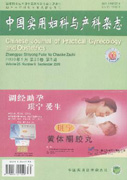Abstract: Objective To investigate the relevant factors of cervical intraepithelial neoplasia residual or recurrence after cervical conization. Methods Searched Pubmed, CNKI and Wanfang database for relevant articles published from January 2006 to June 2013 with the keywords of “cervical intraepithelial neoplasia” , “cervical conization” , “esidual“, “recurrent” and “factor”, both in English and Chinese, and then fetched information and applied RevMan5 to do the Meta analysis. The type of research design is case-control study or cohort study. Results 15 articles met the inclusion criteria with 2721 follow-up cases. The result of Meta analysis showed that those people who are over 50 years old(OR=3.67,95%CI 2.44 ~5.52),with positive margin(OR=4.43,95%CI 3.42 ~5.75),gland involvement(OR=4.54,95%CI 2.22 ~9.30), pre-conization high load of human papillomavirus (HPV) (OR=6.51,95%CI 4.32 ~9.81), post-conization persistent positive high-risk HPV test (OR=33.39,95%CI 16.86 ~66.14),Human immunodeficiency virus(HIV) infection(OR=5.60,95%CI 3.10 ~10.11)and menopause(OR=2.32,95%CI 1.35~3.99) are with higher risk of residual or recurrence after cervical conization while smoking is a related factor of residual or recurrence after conization without statistical significance.Conclusion The relevant risk factors of cervical intraepithelial neoplasia residual or recurrence after cervical conization are over-50, positive margin, gland involvement, pre-conization high load of HPV, post-conization persistent positive high-risk HPV test, HIV infection and menopause while smoking is not the risk factor of cervical intraepithelial neoplasia residual or recurrence after cervical conization.

